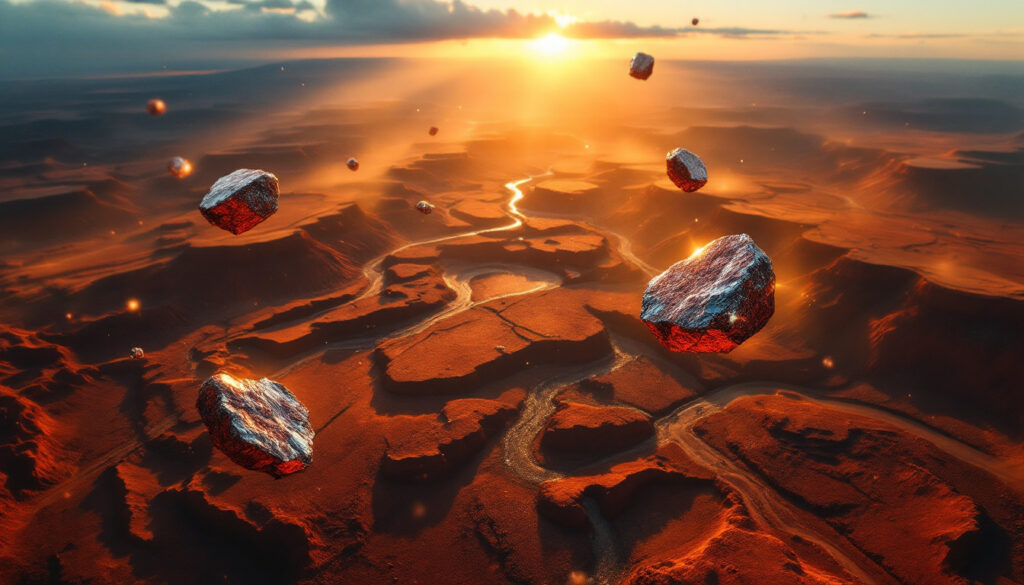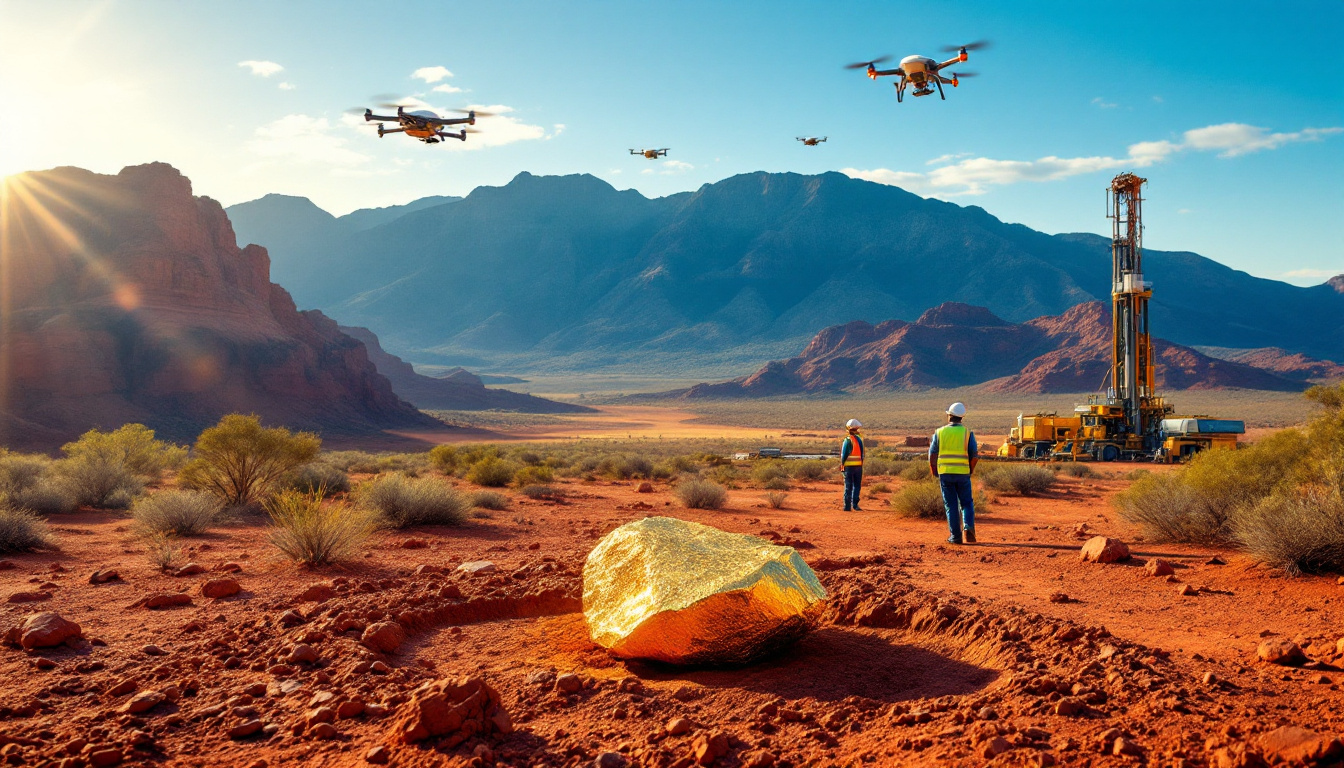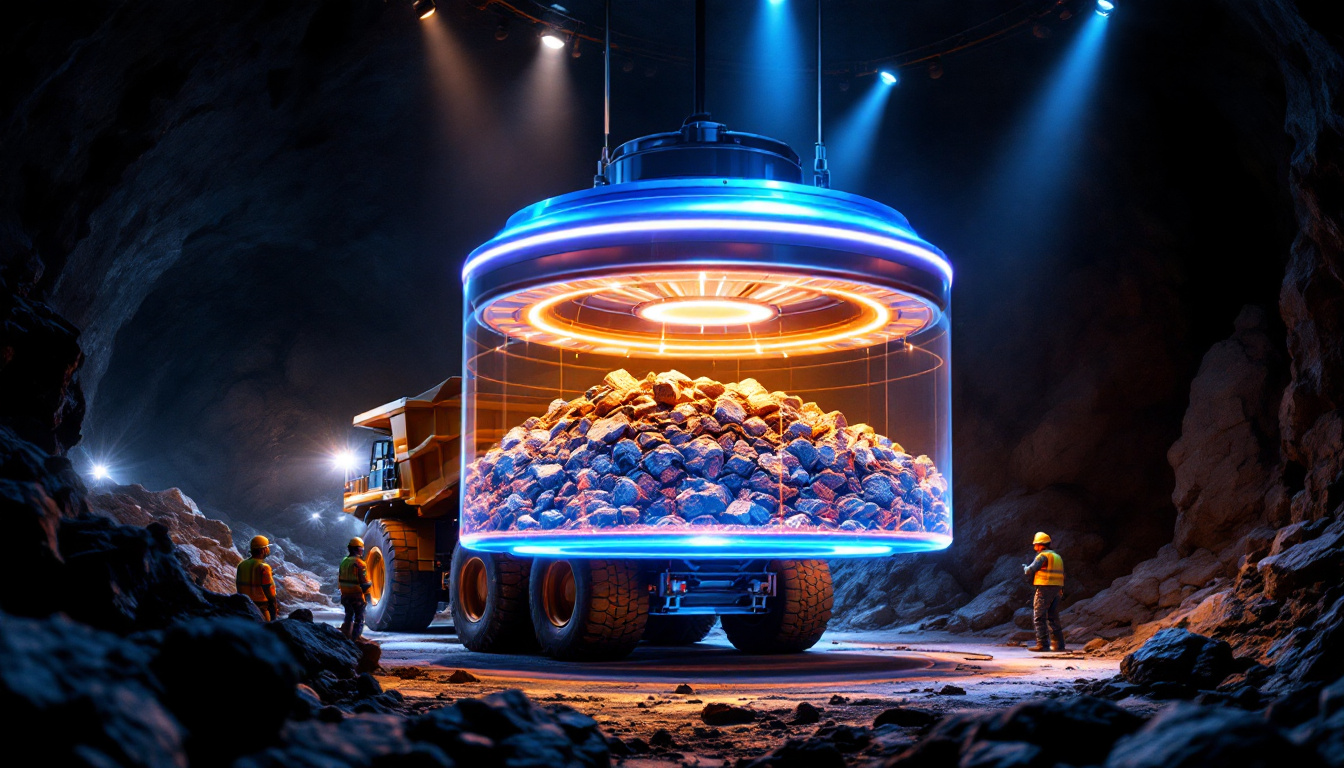What Makes Australia a Global Leader in the Iron Ore Industry?
Australia stands as the undisputed titan of the global iron ore industry, producing over 900 million tonnes annually and commanding nearly 60% of the seaborne trade. This dominance isn't accidental—it stems from a unique combination of geological fortune, strategic development, and technical excellence that has positioned the nation as the world's premier supplier of this critical steelmaking ingredient.
The country's iron ore story centers around Western Australia's Pilbara region, often described as "the Silicon Valley of iron ore"—a hub of innovation, investment, and world-class operations that collectively export approximately 2.5 million tonnes daily. This remarkable iron ore industry in Australia generates over $97 billion in annual export revenue, forming the backbone of Australia's economic relationship with Asia.
What truly distinguishes Australian iron ore is not merely its abundance but its exceptional quality—featuring high iron content, manageable impurity levels, and unique lump ore capabilities that provide both economic and environmental advantages in steelmaking processes worldwide.
How Did Australia Become the World's Largest Iron Ore Exporter?
Australia's iron ore journey began in earnest with a pivotal political decision—the lifting of the export embargo in 1960. Prior to this watershed moment, government policy had restricted iron ore exports to conserve what was believed to be limited resources for domestic use. When geological surveys revealed the Pilbara's vast potential, this restriction was removed, unleashing a wave of exploration and development.
Japan's post-war industrial boom provided the first major market, with Japanese steel mills seeking reliable, high-quality ore sources beyond traditional suppliers. This partnership catalyzed the development of the first generation of Pilbara mines, rail networks, and ports during the 1960s-1970s, establishing the foundation of today's export infrastructure.
The industry expanded steadily through the 1970s-1980s as Taiwan and South Korea joined Japan as significant customers, pushing Australian exports to approximately 200 million tonnes per annum (Mtpa). However, the truly transformative growth phase came with China's extraordinary industrialization in the early 2000s.
Between 2002 and 2018, Australian iron ore production quadrupled, far outpacing Brazil's 1.6-fold increase during the same period. This rapid expansion was fueled by an unprecedented $93 billion investment in Pilbara iron ore projects, developing new mines, expanding rail capacity, and building state-of-the-art port facilities capable of handling the world's largest bulk carriers.
The entry of new producers like Fortescue Metals Group—which built three 40Mtpa mines in less than five years between 2006-2011—and Roy Hill's integrated $10 billion project further cemented Australia's dominance. By 2016, Australian exports had soared beyond 800 Mtpa, making the country the indispensable supplier to the global steel industry.
What Are Australia's Competitive Advantages in Iron Ore?
Australia's competitive edge begins with its extraordinary resource endowment—over 70 billion tonnes of JORC-compliant iron ore resources, more than twice Brazil's reserves on a 62% Fe basis. This vast resource base ensures production sustainability for approximately 65 years at current rates.
Geographic proximity to Asian markets provides a critical logistical advantage. Australian shipments reach Asian ports in approximately 14 days, compared to the 40-day journey from Brazil. This proximity reduces freight costs, inventory requirements, and supply chain risks for Asian steel producers.
Perhaps Australia's most significant advantage lies in its ore type. An extraordinary 96% of Australian resources consist of high-grade hematite suitable for direct shipping ore (DSO), requiring minimal processing beyond crushing and screening. This contrasts sharply with many global competitors that must process lower-grade magnetite ores.
The economic impact of this difference is substantial. Australian DSO operations typically have ore-to-product ratios around 1.2:1, meaning 1.2 tonnes of mined material yields 1 tonne of saleable product. By comparison, Chinese domestic magnetite mines operate at ratios around 5:1, necessitating extensive processing with higher costs and environmental impacts.
This processing advantage translates to significantly lower capital and operating costs. Dry processing of DSO typically requires $15-20/tonne of capacity in capital expenditure and $5-7/tonne in operating costs, versus $50-75/tonne capex and $12-18/tonne opex for wet processing of magnetite ores.
How Does Australian Iron Ore Quality Compare Globally?
Australian iron ores occupy the premium end of the global quality spectrum, characterized by high iron content (58-67% Fe) and relatively low levels of impurities or "gangue" elements, particularly alumina (Al₂O₃) and silica (SiO₂).
The Pilbara region produces three principal ore types, each with distinct characteristics:
- Brockman ores: Higher-grade deposits (typically 64% Fe) with moderate alumina (2.0%) and excellent lump yields (35%)
- Marra Mamba ores: Medium-grade deposits (60% Fe) with higher alumina (3.2%) and moderate lump yields (25%)
- Channel Iron Deposits (CID): Lower-grade deposits (57% Fe) with low alumina (1.8%) but minimal lump production (<5%)
This diversity allows Australian producers to blend ores strategically to meet specific customer requirements. By comparison, Brazilian itabirites typically contain 30-45% Fe and require intensive beneficiation, while most Chinese domestic magnetites contain only 20-35% Fe.
The quality advantage of Australian ores has become increasingly significant as average seaborne ore quality has deteriorated over time. Between 2006 and 2016, industry analysis shows the average gangue content of Asian seaborne iron ore imports increased by 27%, while phosphorus content rose 30%. This trend has enhanced the premium status of higher-grade Australian products.
As metallurgist J. Clout notes, "Channel iron deposits have enabled low-aluminum blends that are increasingly critical for modern blast furnace operations." This technical distinction has positioned Australian ores as the benchmark against which other global supplies are measured.
Why Is Australian Lump Ore a Unique Competitive Advantage?
Australia supplies approximately 86% of the world's high-grade lump ore—a specialized product that offers significant economic and environmental benefits to steelmakers. This near-monopoly represents one of Australia's most valuable yet underappreciated competitive advantages.
Unlike fines, which require sintering (agglomeration) before use in blast furnaces, lump ore can be charged directly. This eliminates an entire processing step, reducing both costs and emissions. In 2019, the market recognized this value with a lump premium averaging $17 per dry metric tonne, generating approximately $3 billion in additional revenue for Australian producers.
The environmental advantages of lump ore are particularly significant in an increasingly carbon-conscious industry. Each tonne of lump ore used in place of sintered fines avoids approximately 220 kg of CO₂ emissions associated with the sintering process. When calculated across Australia's annual lump production, this represents approximately 30 million tonnes of avoided CO₂ emissions yearly—equivalent to removing 6.5 million cars from the road.
Lump ore also improves blast furnace performance through enhanced permeability (approximately 15% better than sinter), reduced coke consumption (8% less), and improved productivity (5% higher). These operational benefits explain why steel mills prioritize lump in their blends wherever possible.
The geological conditions that create lump-yielding ores are relatively rare globally, occurring primarily in the Pilbara's ancient banded iron formations. Australian producers have invested heavily in mining and logistics systems that preserve lump integrity, including Rio Tinto's AutoHaul™ autonomous rail system, which reduces handling and breakage during transport.
How Do Iron Ore Quality Attributes Impact Steel Production?
The chemical composition of iron ore has profound effects on blast furnace efficiency, productivity, and operating costs. Among the most critical quality attributes are gangue components—particularly alumina (Al₂O₃) and silica (SiO₂)—which must be removed through the addition of fluxes that create slag.
Slag chemistry operates within tight constraints to maintain optimal viscosity and desulfurization capability. The industry standard calls for basicity (CaO/SiO₂) between 1.15-1.25 and MgO levels of 5-8%. When alumina levels exceed 15%, blast furnace productivity can decrease by up to 20% due to increased slag viscosity and reduced permeability.
Critically, not all gangue elements create equal challenges. As metallurgist G. Beros notes, "Alumina is the new phosphorus"—referring to its disproportionate impact on slag volume. While 1% of silica typically produces approximately 2 tonnes of additional slag, 1% of alumina generates around 6 tonnes, significantly increasing limestone flux requirements and energy consumption.
Modern steel mills alternate between "silica constrained" and "alumina constrained" operational modes depending on ore blend characteristics. This dynamic explains why iron ore pricing is generally more sensitive to alumina than silica content, with penalties for alumina typically 2-3 times higher than those for equivalent silica levels.
Phosphorus presents another quality challenge. While historically a significant concern due to its negative impact on steel properties, the widespread adoption of De-Phosphorization (De-Phos) technology in over 90% of Asian mills has somewhat mitigated this issue. However, De-Phos processes increase production costs by approximately $5-8 per tonne of steel, maintaining the premium for naturally low-phosphorus ores.
Leading steel producers like JFE Steel and Baosteel have developed sophisticated ore blend optimization programs that leverage Australian ore characteristics to maintain optimal furnace conditions while minimizing production costs.
What Is the Current State of Australia's Iron Ore Industry?
The Pilbara region has evolved into what industry experts call "the Silicon Valley of the global iron ore industry"—a concentrated hub of world-class operations, technical expertise, and continuous innovation. In 2019, Australian iron ore exports generated more than $97 billion in revenue, making it the nation's most valuable export commodity.
The industry's current production profile includes approximately 36% as standard 62% Fe fines, 21% as 62.5% Fe lump, with the remainder comprising various specialty products including lower-grade fines and premium high-grade concentrates. This diverse product portfolio allows Australian producers to serve virtually every segment of the global market.
Four major producers dominate the landscape: BHP, Rio Tinto, Fortescue Metals Group, and Roy Hill. Together, they operate an extensive network of mines connected by approximately 3,800 kilometers of heavy-haul rail and seven dedicated iron ore ports. This integrated infrastructure allows the industry to export almost 2.5 million tonnes daily—a logistical achievement unmatched in bulk commodity industries.
Automation has become a defining characteristic of Australian operations. Rio Tinto's AutoHaul™ system operates over 200 driverless locomotives, while autonomous drilling rigs and haulage fleets are increasingly common across Pilbara mines. These technologies have improved productivity by approximately 40% since 2015 while enhancing safety outcomes.
Port Hedland, the world's largest bulk export facility, exemplifies the scale of Australian operations with a throughput capacity exceeding 700 million tonnes annually. Its automated stockyards and high-speed ship-loading systems can load the largest bulk carriers at rates exceeding 8,000 tonnes per hour.
What Does the Future Hold for Australian Iron Ore?
Australia's iron ore industry faces a future defined by both continuity and transformation. With a resource base capable of sustaining production for approximately 65 years at current rates, supply capacity remains secure. However, the industry is evolving to address changing ore characteristics, customer requirements, and environmental expectations.
Several major projects are reshaping the production landscape. BHP's 2024 iron ore and copper production surge includes South Flank ($3.6 billion) which will deliver 80 million tonnes of Marra Mamba ore annually, replacing depleting Yandi operations. Rio Tinto's Koodaideri ($2.6 billion) incorporates extensive digital technologies as a "Mine of the Future" concept, while Fortescue's Eliwana project extends the company's Western Hub development.
As higher-grade deposits gradually deplete, the industry faces increasing technical challenges from below water table Marra Mamba ores, which typically contain higher levels of impurities. This evolution is driving investment in beneficiation technologies, particularly for alumina reduction, to maintain product quality.
Environmental considerations are increasingly central to future planning. Major producers have announced greenhouse gas reduction targets averaging 30% by 2030, driving interest in renewable energy integration, electrified mining equipment, and decarbonisation in Australia's mining sector to enable more efficient downstream steelmaking.
Emerging technologies including sensor-based ore sorting, microwave-assisted grinding, and dry magnetic separation are being deployed to improve both economic and environmental performance. These innovations aim to maintain Australia's competitive position while addressing sustainability concerns.
The industry's digital transformation in mining operations continues apace, with BHP's South Flank implementing AI-driven grade control systems and Rio Tinto's Koodaideri featuring a comprehensive digital twin that simulates operations before physical deployment.
How Does Australia's Iron Ore Industry Contribute to Global Steel Production?
Australia's iron ore industry has become fundamentally integrated into global steel production, particularly in Asia. Australian ore supplies approximately 60% of China's 2025 iron ore import strategy and market dynamics and forms the foundation of steel production throughout Japan, South Korea, and Taiwan.
This relationship has evolved beyond mere transactional supply into deep technical collaboration. Over four decades of partnership with Asian steelmakers has created sophisticated ore blending strategies, tailored product specifications, and continuous quality improvement programs that optimize blast furnace performance.
As the China Iron and Steel Association (CISA) notes, "No viable Australian substitute exists for blast furnace routes" due to the specific chemical and physical characteristics that Australian ores bring to steelmaking processes. Japanese and Korean mills, in particular, have designed their furnaces and sintering plants around Australian ore characteristics.
Technical exchange programs between Australian miners and Asian steel producers have yielded significant innovations, including JFE Steel's "Super Sinter" formulations optimized for Australian fines and POSCO's low-carbon slag practices that maximize the value of Australian lump ore.
Co-developed quality standards, particularly around lump degradation testing, ensure that Australian products meet the exact requirements of modern steelmaking. This close alignment has created resilient supply relationships that withstand market volatility.
Australian ore quality has enabled Asian mills to achieve world-leading productivity levels while adapting to increasingly stringent environmental regulations. As steel production evolves toward lower-carbon technologies, Australian iron ore price forecast and market insights suggest that high-grade products are positioned to remain central to these transitions.
What Are the Environmental Implications of Australia's Iron Ore Industry?
The environmental footprint of Australia's iron ore industry must be considered across both local operations and downstream value chain impacts. At the operational level, the industry has achieved significant improvements in resource efficiency, with water recycling rates exceeding 85% across major operations and energy intensity decreasing approximately 15% since 2010.
Australia's DSO advantage creates substantial environmental benefits compared to magnetite processing, requiring significantly less energy and water. Dry processing methods typical in the Pilbara use approximately 90% less water than wet beneficiation processes required for lower-grade ores.
The industry's most significant environmental contribution may be through its unique lump ore supply. In 2019 alone, the use of Australian lump ore in place of sintered fines avoided approximately 30 million tonnes of CO₂ emissions in global steelmaking—a "green premium" that enhances the value proposition of Australian products.
Automation has delivered unexpected environmental dividends. Autonomous haulage and drilling reduces fuel consumption by approximately 15% through optimized routes and operating parameters. Rio Tinto's solar and battery microgrids powering remote operations have installed capacity exceeding 20MW, while BHP's endemic species monitoring programs establish new standards for biodiversity management.
As climate change concerns intensify, the industry is pursuing more ambitious sustainability initiatives. Major producers are investigating renewable hydrogen for mobile equipment, electrification of mining fleets, and enhanced beneficiation to produce higher-grade products that enable more efficient steelmaking.
The industry is also increasingly engaged with carbon credit accreditation pathways, lifecycle assessment methodologies, and climate adaptation strategies that address both physical and transition risks in a carbon-constrained future.
FAQ About Australia's Iron Ore Industry
What makes Australian iron ore different from other global sources?
Australian iron ore distinguishes itself through its direct shipping ore (DSO) quality, requiring minimal processing compared to competitors' ores. With 96% of resources as high-grade hematite and exceptionally low phosphorus levels, Australian ores set global quality benchmarks. Additionally, Australia produces 86% of the world's premium lump ore, a unique product that delivers both economic and environmental benefits in steelmaking.
Want to Capitalise on the Next Major Mineral Discovery?
Receive instant alerts about significant ASX mineral discoveries with Discovery Alert's proprietary Discovery IQ model, turning complex data into actionable investment insights. Explore our dedicated discoveries page to understand why historic discoveries like those in the iron ore sector can generate substantial returns, and begin your 30-day free trial today.




